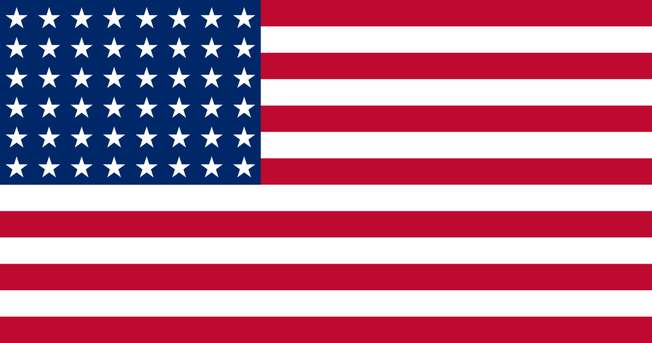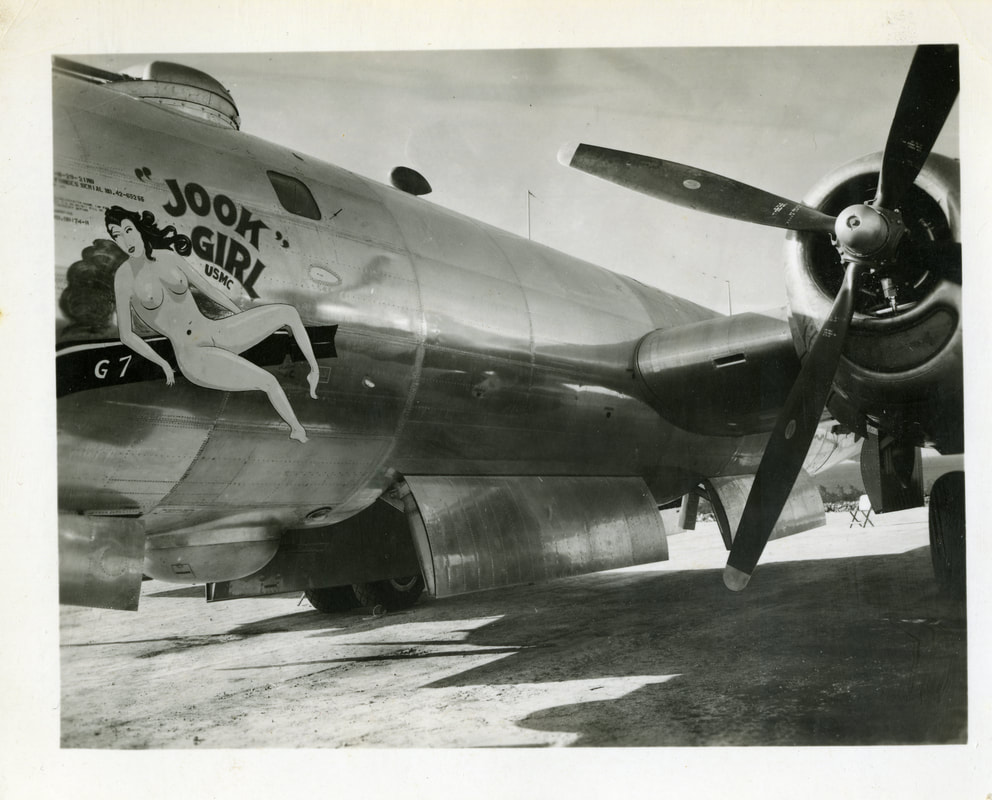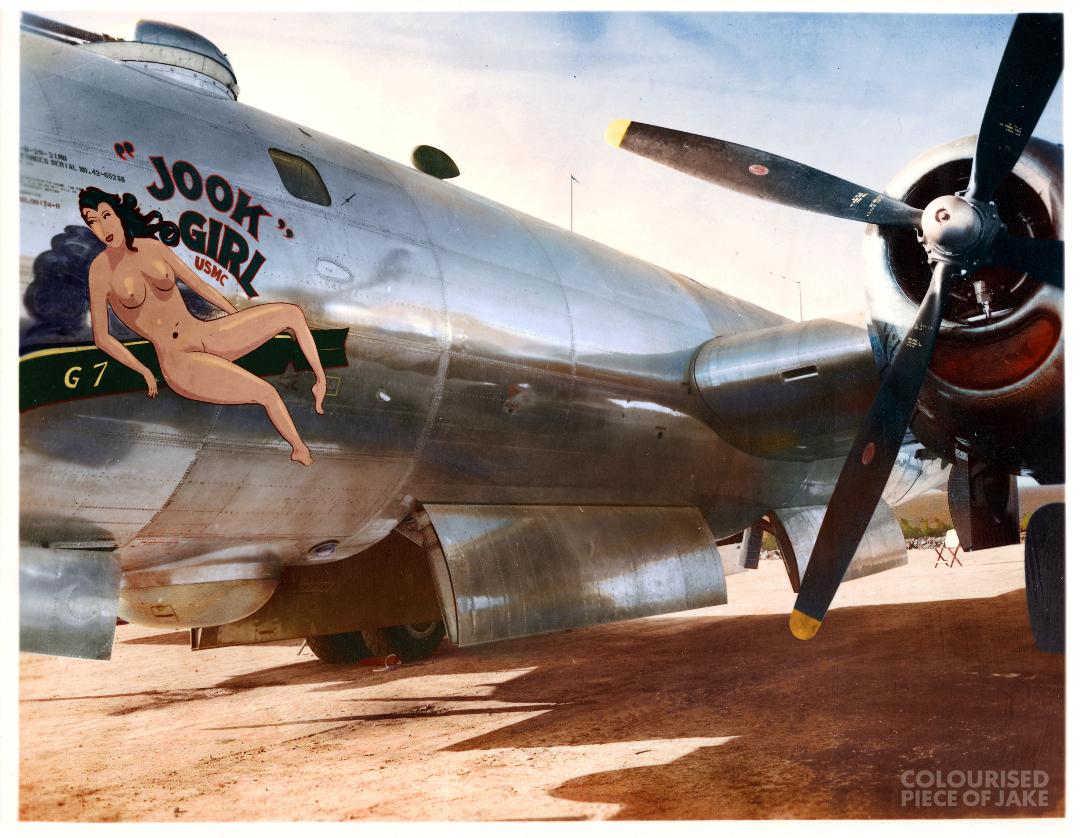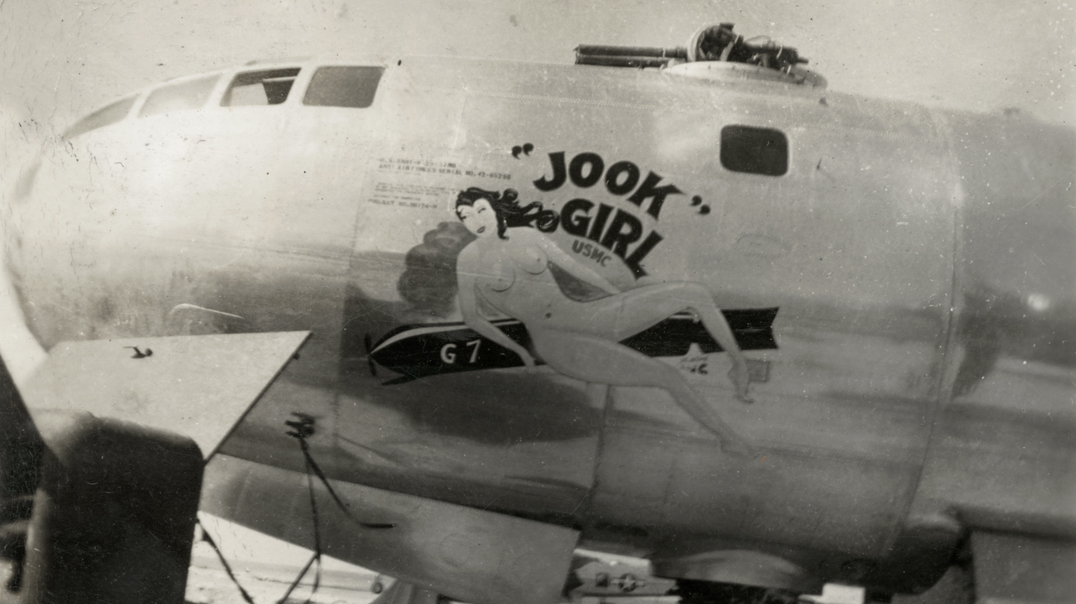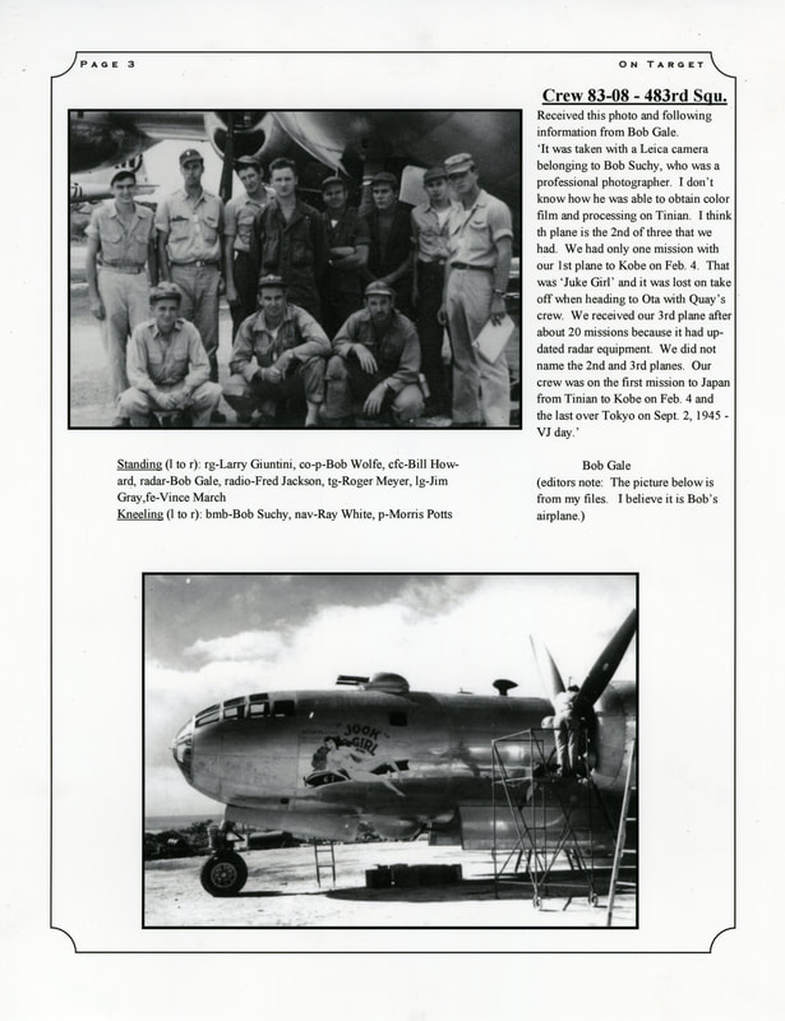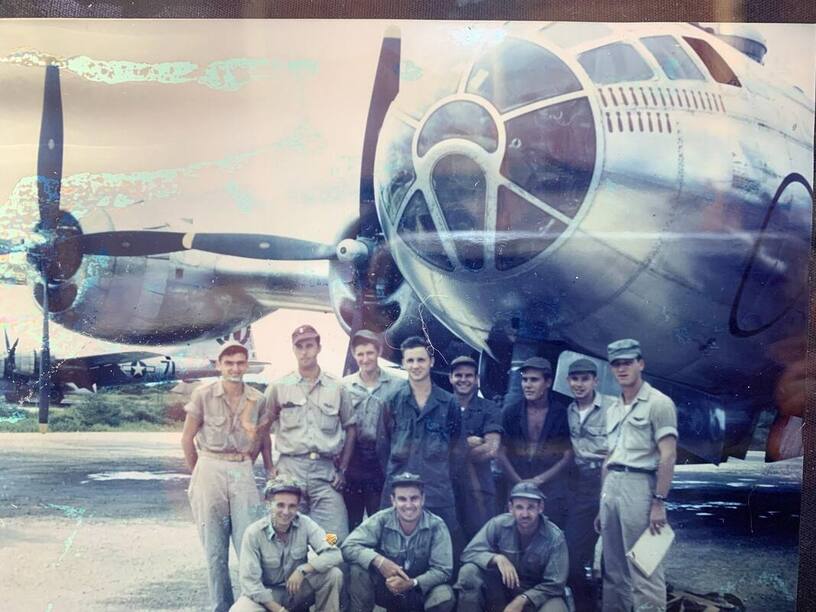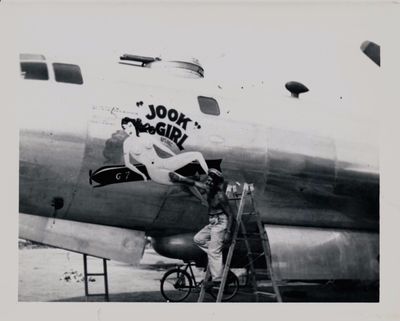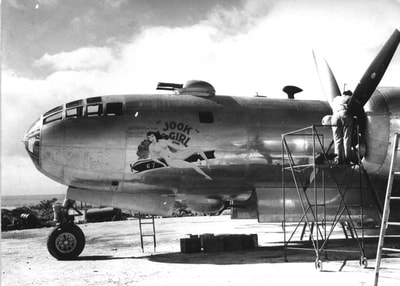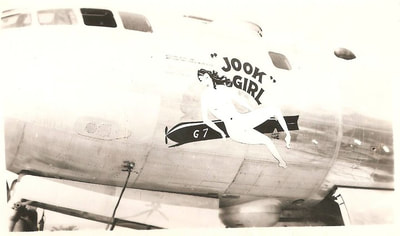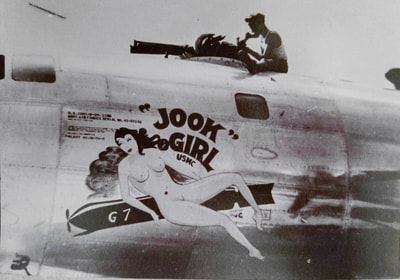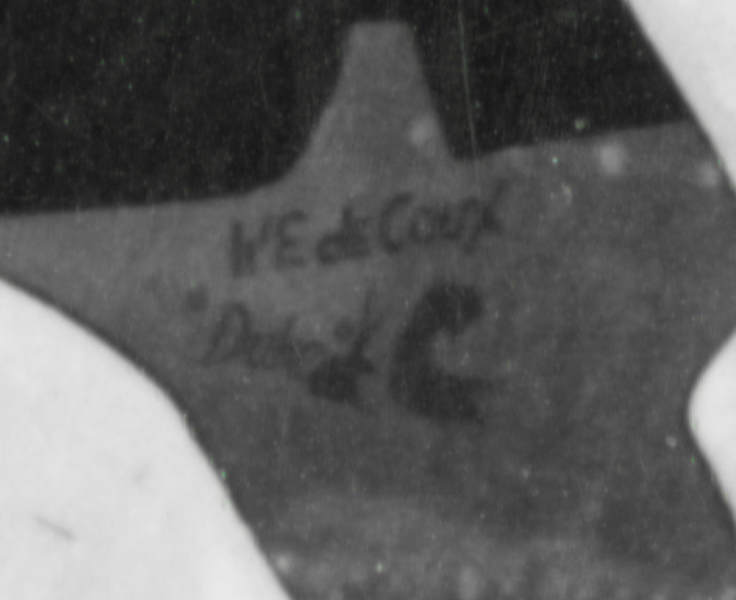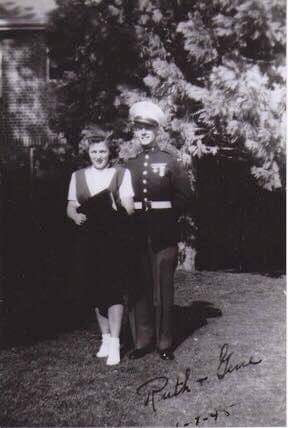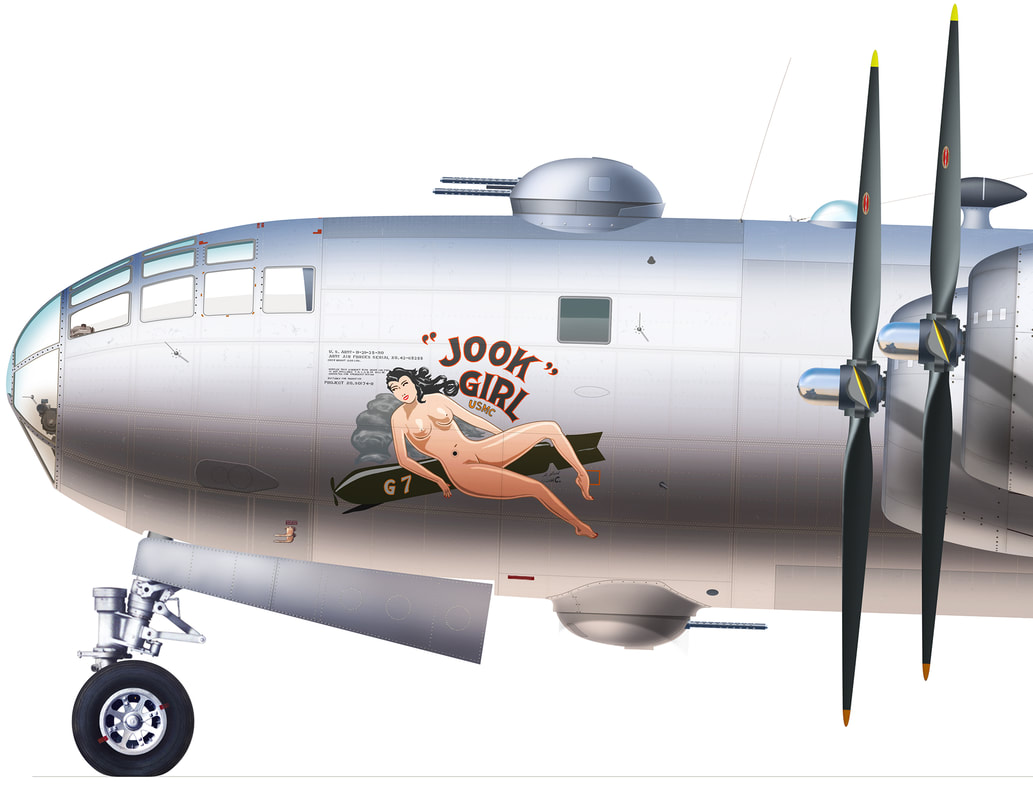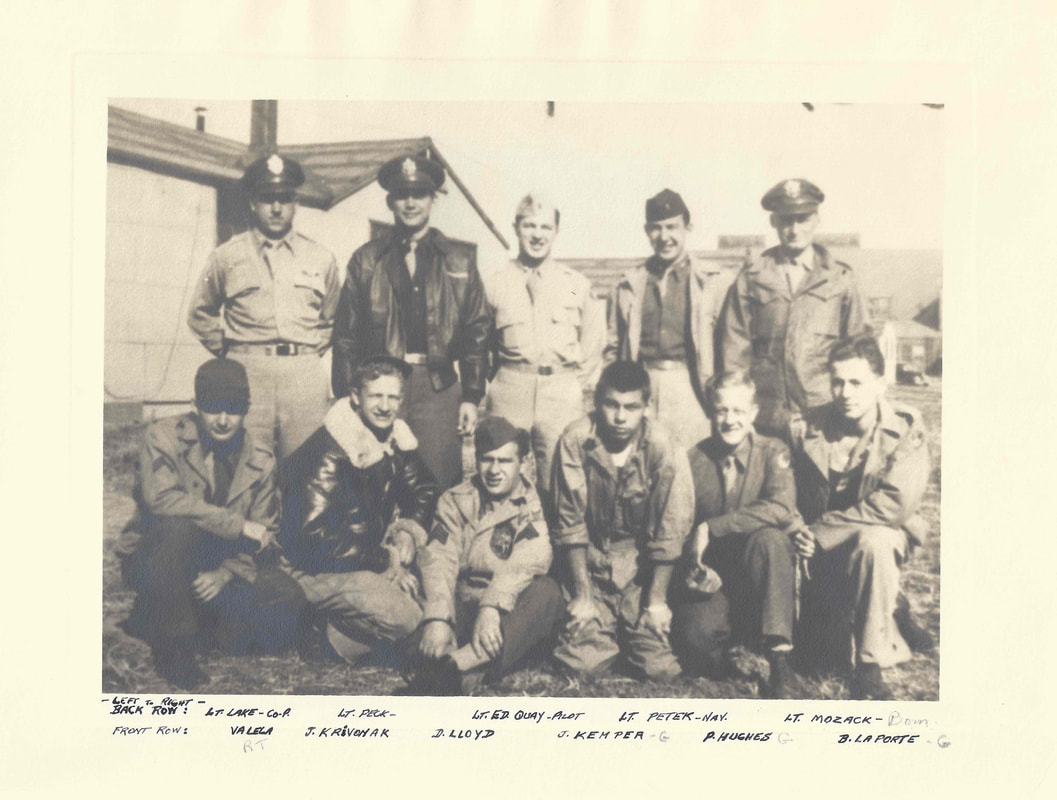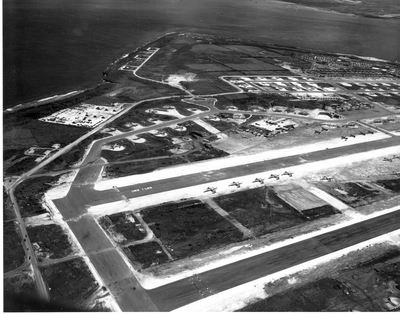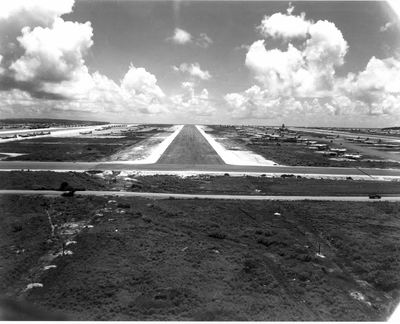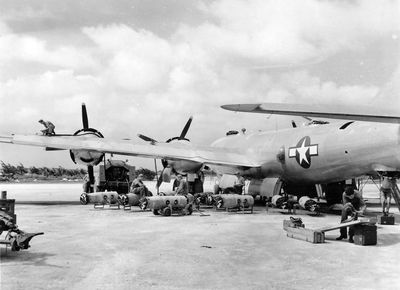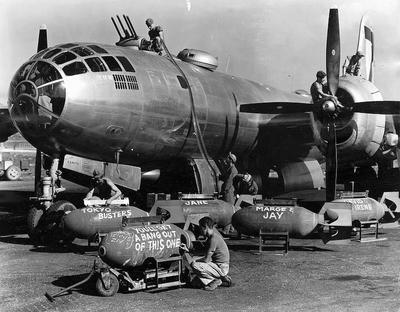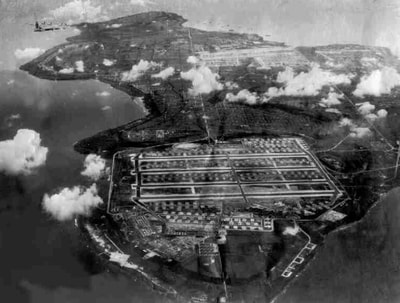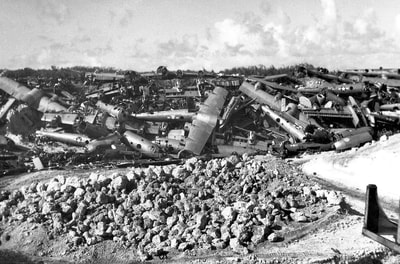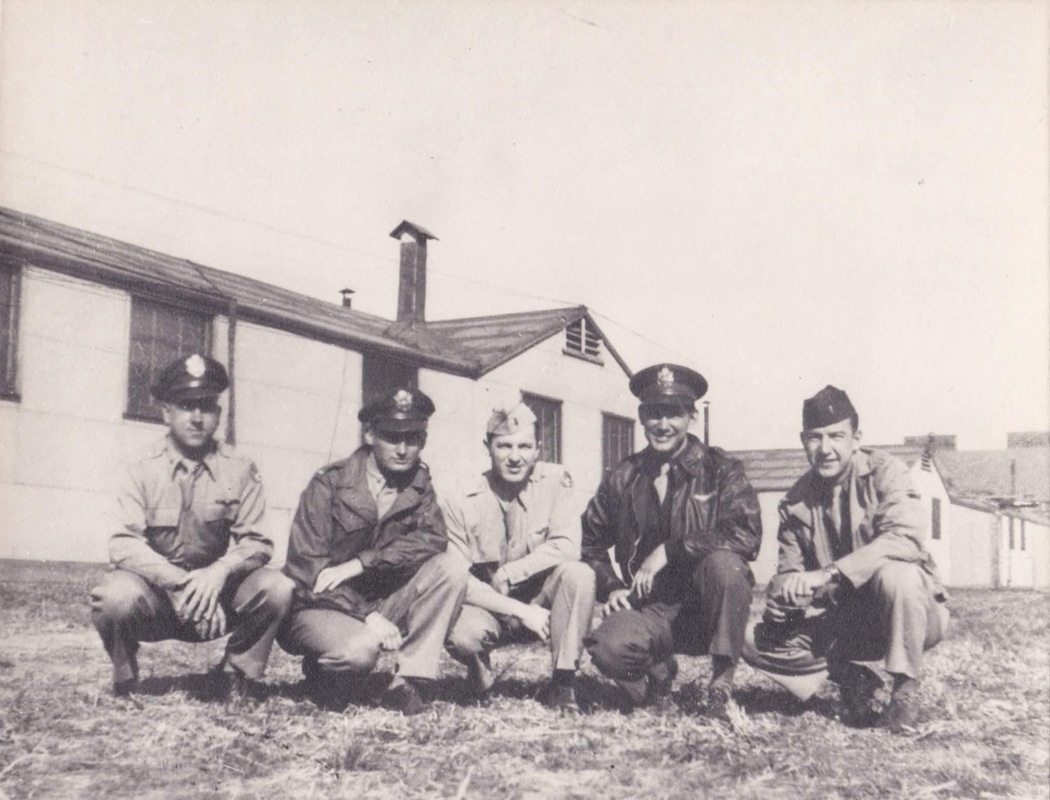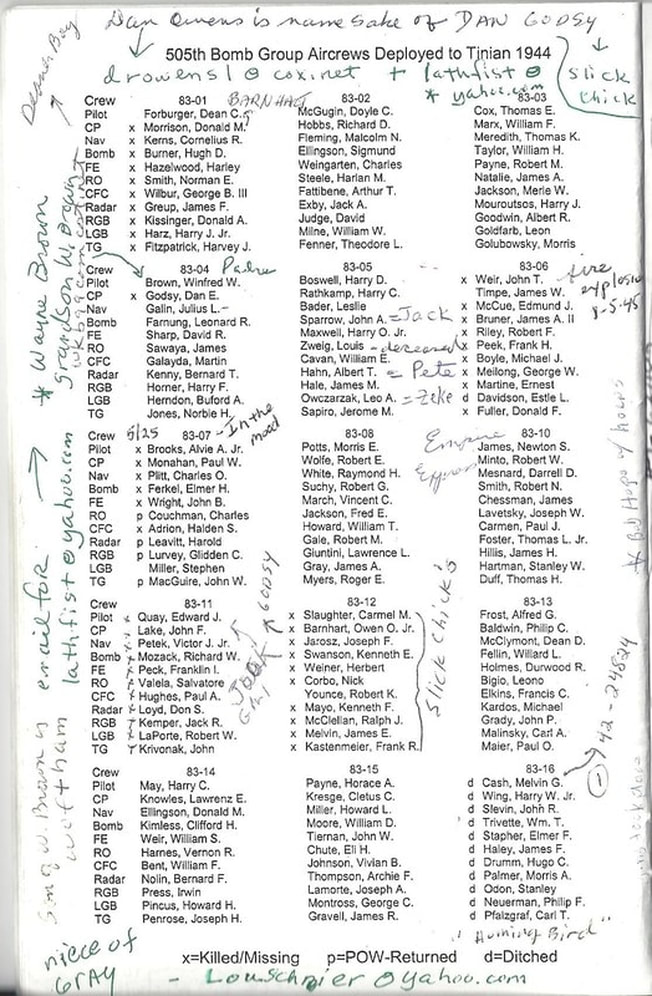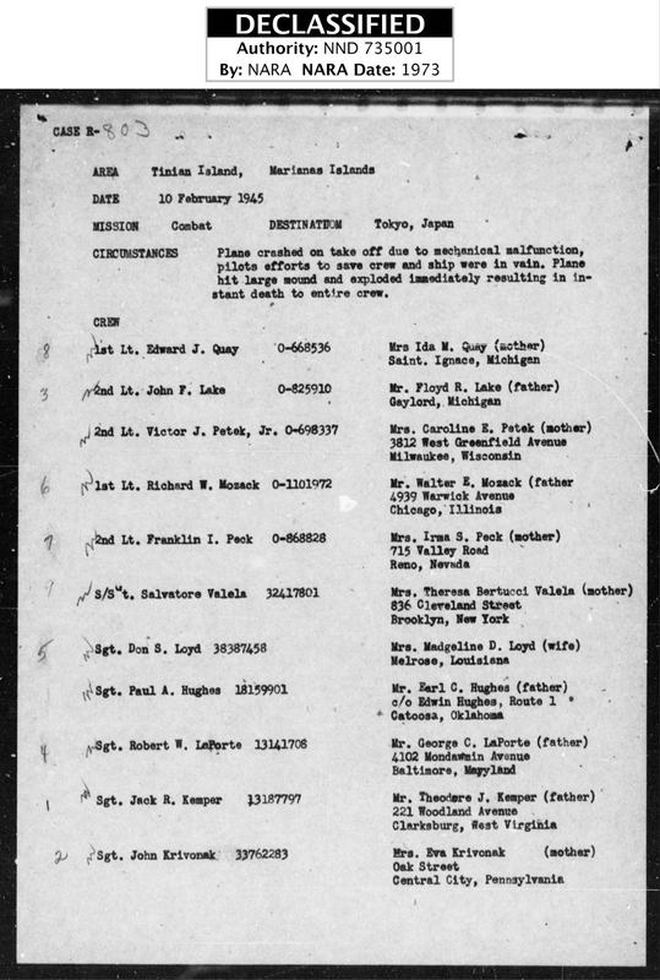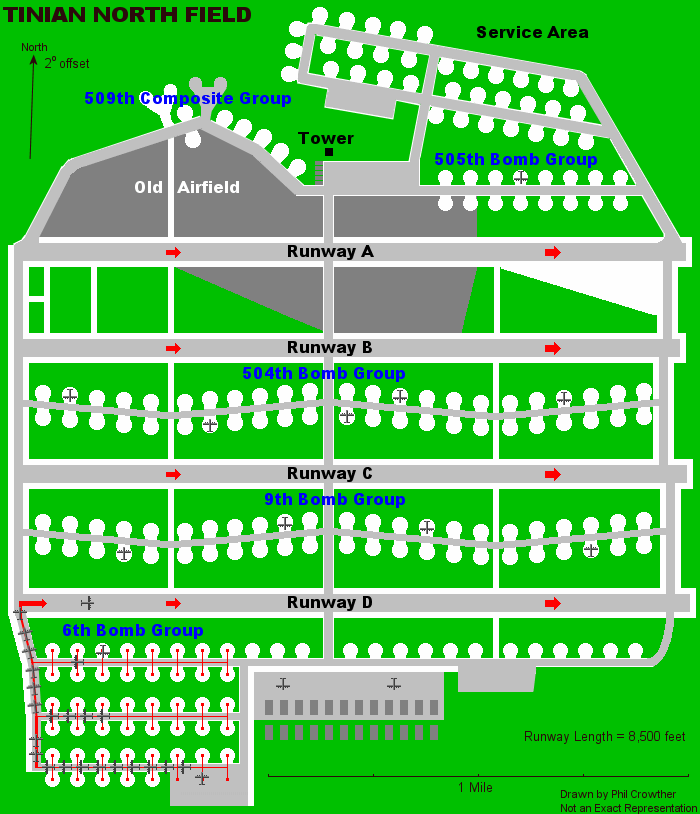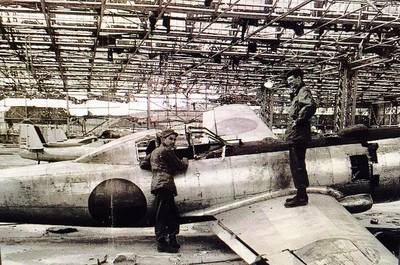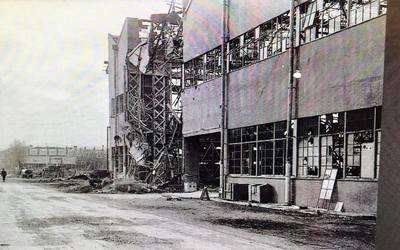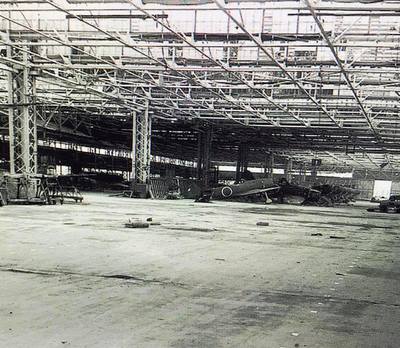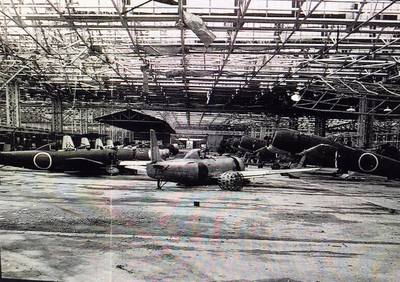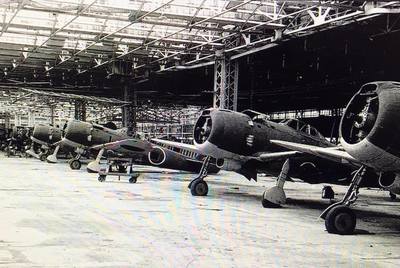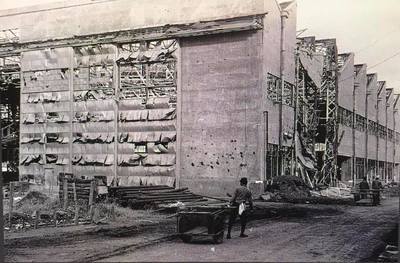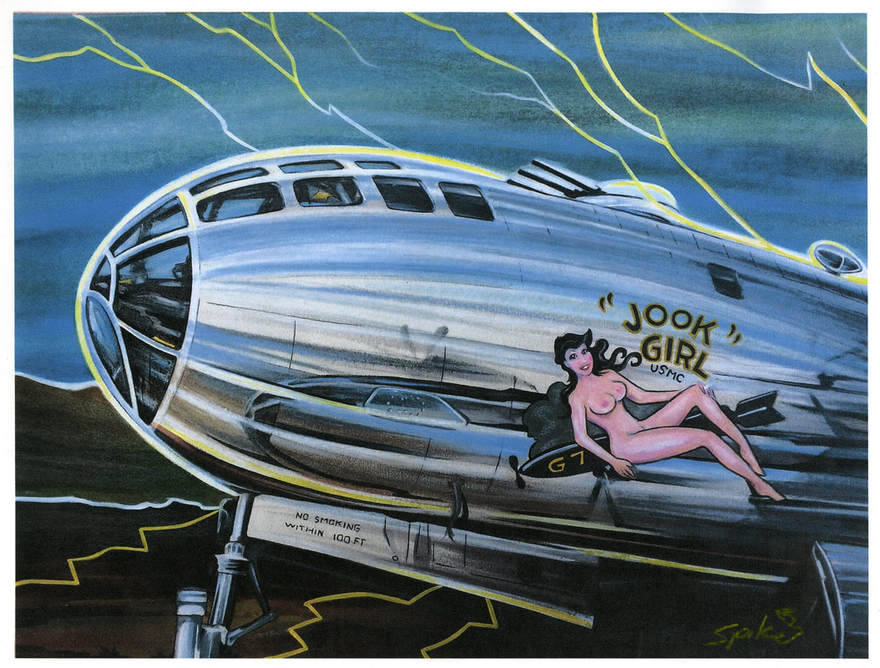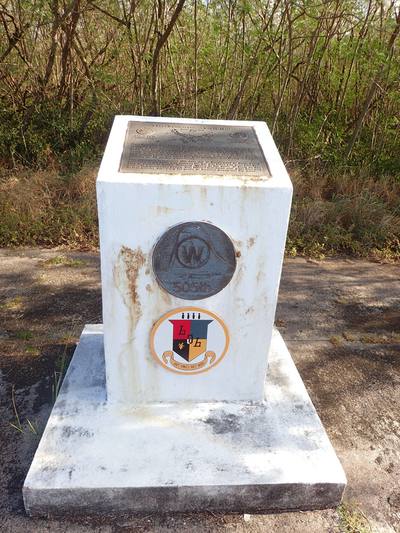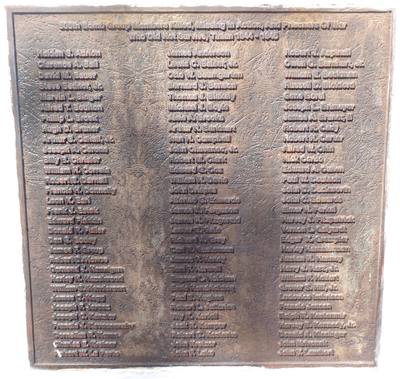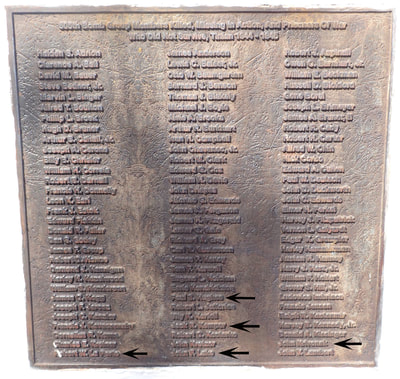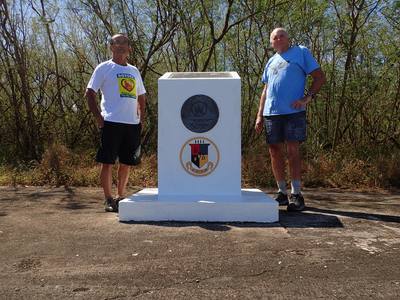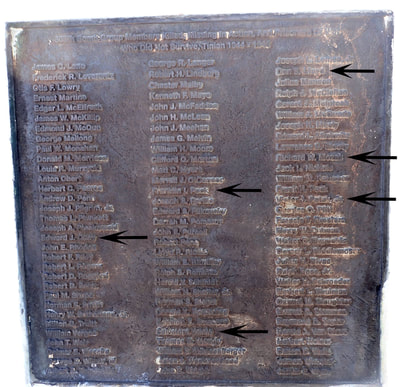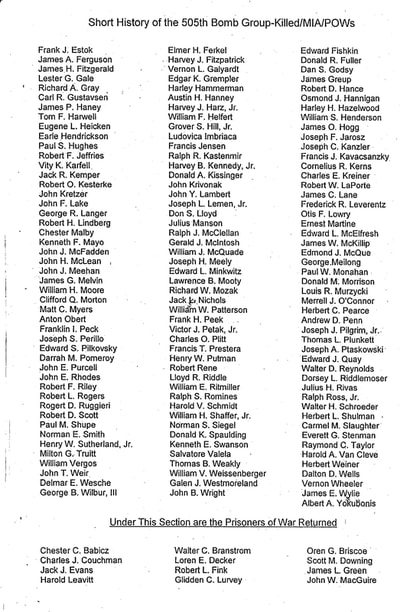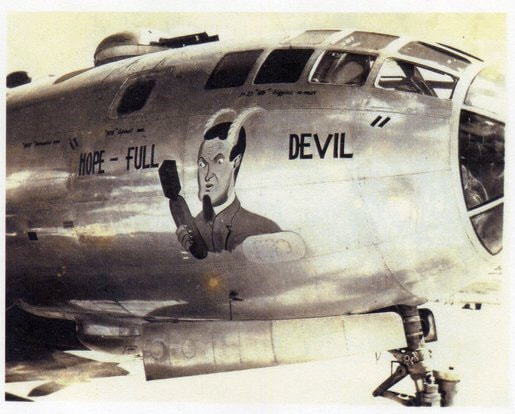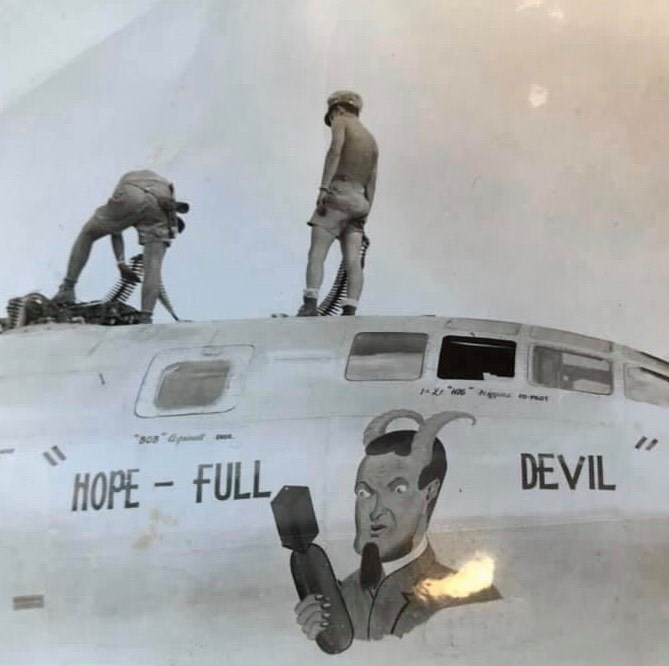b-29 superfortress (42-65255)
February 10, 1945
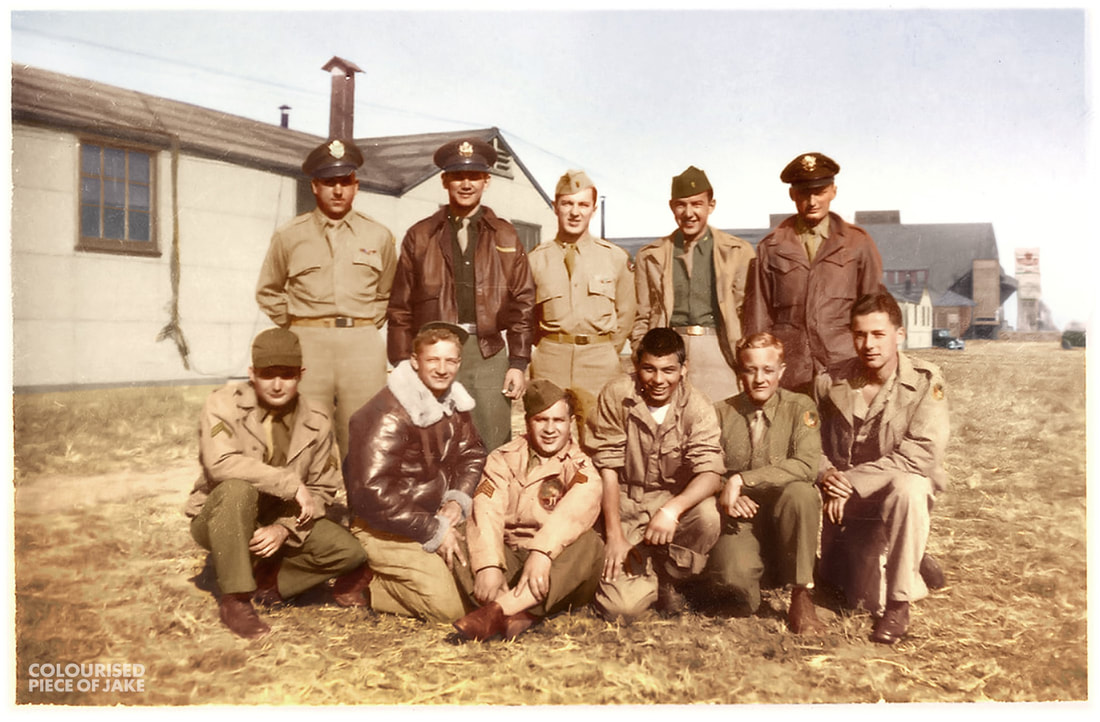
Jook Girl Crew, #83-11. Standing, L-R: 2nd LT. John F. Lake, Co-Pilot, 2nd LT. Franklin I. Peck, Flight Engineer, 1st LT. Edward J. Quay, Pilot, 2nd LT. Victor J. Petek, Jr., Navigator, 1st LT. Richard W. Mozack, Bombardier. Kneeling, L-R: SGT. Don S. Loyd, Radar, SGT. John Krivonak, Tail Gunner, S/SGT. Salvatore Valela, Radio Operator, SGT. Jack R. Kemper, Right Gun Blister, SGT. Paul A. Hughes, Central Fire Control Gun Commander, SGT. Robert W. LaPorte, Left Gun Blister.
Digitally colorized image courtesy, Jakob Lagerweij of Facebook page "PIECE OF JAKE."
"jook" Girls: Employeed by taverns to "dance and make love with the patrons."
This page is dedicated to the crew of "Jook" Girl, a B-29 Superfortress (505th BG, 483rd BS) that was destroyed during takeoff from the Island of Tinian during World War II, February 10, 1945. The plane carried a crew of 11, and all were killed instantly when the aircraft failed to gain altitude on takeoff for a bombing mission to Ota, Japan. In addition to the crew, one bystander on the ground was also killed by flying debris as the aircraft, fully loaded with fuel and bombs, exploded approximately 100 yards off the east end of runway B. The planes Navigator, Victor J. Petek, Jr., was my first cousin, twice removed (my Grandfather's Cousin).
My goal is to assemble a collection of information and photographs of this crew and mission. It is important to me that all of these men are honored and remembered for their sacrifice. If anyone visiting this site can help, or had a family member that was part of this crew, please contact me, James, at [email protected] This will be a continuous work in progress, being updated as new information is discovered. To date, I have been in contact with relatives of eight of the eleven crew members: Victor Petek, Edward Quay, John Lake, Jack Kemper, Richard Mozack, Salvatore Valela, John Krivonak, Don Loyd, and college friends of Robert LaPorte, as well as the family of Walter deCoux, the plane's nose art artist.
A special shout out to one very helpful gentleman who wishes to remain anonymous. He was able to locate much of the information on each of the crew, and many of the photographs. His help has been invaluable. Thank you.
For all current information and photographs relating to the 11 crew members, and the one bystander killed on the ground, please click on the menu bar at the top of the page, then the last name of the individual.
**Recent information received from a Freedom of Information Act Request on 8 of the 11 crew members, and Roscoe Baker, can be found at the bottom of their pages. Files on the remaining 3 individuals (Hughes, Lake, and Loyd) were to large to upload. Please contact me for their files if interested**
My goal is to assemble a collection of information and photographs of this crew and mission. It is important to me that all of these men are honored and remembered for their sacrifice. If anyone visiting this site can help, or had a family member that was part of this crew, please contact me, James, at [email protected] This will be a continuous work in progress, being updated as new information is discovered. To date, I have been in contact with relatives of eight of the eleven crew members: Victor Petek, Edward Quay, John Lake, Jack Kemper, Richard Mozack, Salvatore Valela, John Krivonak, Don Loyd, and college friends of Robert LaPorte, as well as the family of Walter deCoux, the plane's nose art artist.
A special shout out to one very helpful gentleman who wishes to remain anonymous. He was able to locate much of the information on each of the crew, and many of the photographs. His help has been invaluable. Thank you.
For all current information and photographs relating to the 11 crew members, and the one bystander killed on the ground, please click on the menu bar at the top of the page, then the last name of the individual.
**Recent information received from a Freedom of Information Act Request on 8 of the 11 crew members, and Roscoe Baker, can be found at the bottom of their pages. Files on the remaining 3 individuals (Hughes, Lake, and Loyd) were to large to upload. Please contact me for their files if interested**
Digital artist Jakob Lagerweij talks about his colorization process and works.
brief synopsis of "jook" girl's 2 missions
The first bombing mission flown by the 505th BG, 483rd BS, came on February 4th, 1945. Launched from the Island of Tinian, 28 aircraft were scheduled to fly this mission to Kobe, Japan, with 24 aircraft actually getting airborne, and 4 aircraft aborting prior to takeoff. She was one of 110 total aircraft launched in a multi-wing group formation. "Jook" Girl was being flown this day by crew #83-08, which consisted of:
Morris E. Potts, Pilot
Robert E. Wolfe, Co-Pilot
Raymond H. White, Navigator
Robert G. Suchy, Bombardier
Vincent C. March, Flight Engineer
Fred E. Jackson, Radio Operator
William T. Howard, Central Fire Control Gun Commander
Robert M. Gale, Radar
Lawrence L. Giuntini, Right Gun Blister
James A. Gray, Left Gun Blister, and
Roger E. Myers, Tail Gunner
The formation made it to Japan without issue, and all bombs were released over their targets. Two aircraft were lost as a result of the mission, and one life was lost. Morale was high among the crews and ground crews. Repairs were made to aircraft that had been hit by flak, some mechanical, all were refurbished, and made ready for the next bombing mission, this one, to Ota, Japan.
The second bombing mission came on February 10, 1945. This time, "Jook" Girl would be flown by crew #83-11, which consisted of:
Edward J. Quay, Pilot
John F. Lake, Co-Pilot
Victor J. Petek, Jr., Navigator
Richard W. Mozack, Bombardier
Franklin I. Peck, Flight Engineer
Salvatore Valela, Radio Operator
Paul A. Hughes, Central Fire Control Gun Commander
Don S. Loyd, Radar
Jack R. Kemper, Right Gun Blister
Robert W. LaPorte, Left Gun Blister, and
John Krivonak, Tail Gunner
Both crews were very close friends, having trained with each other for many months.
21 aircraft were scheduled to fly this mission to Ota, Japan, with 18 actually getting airborne, 2 aircraft aborting prior to takeoff, and 1, "Jook" Girl, crashing on takeoff. She was to be one of 120 total aircraft to be launched in a multi-wing group formation. Seven other aircraft would not return to Tinian following this mission.
Bombs had been loaded, the plane was fully fueled, and everything appeared ready to go. As "Jook" Girl and her crew began their takeoff roll, everything seemed normal. Ground crews had lined the runways to watch the planes and crews leave. As "Jook" Girl gained takeoff speed, something happened. Roughly two thirds of the way down the runway, the plane could been seen getting slightly airborne before being set back down on the runway. Witnesses on the ground reported that it appeared the plane was having trouble getting enough power to lift off the runway. By the time the brakes were applied, "Jook" Girl had gained enough forward speed that the crew now had trouble slowing down. Rather than turning left or right at the end of the runway where ground crews had gathered, she went off the end of the runway and struck a mound of dirt. The plane broke in two, exploded, killing the entire crew, and one bystander on the ground. By going off the end of the runway, more lives were saved, than were lost.
Morris E. Potts, Pilot
Robert E. Wolfe, Co-Pilot
Raymond H. White, Navigator
Robert G. Suchy, Bombardier
Vincent C. March, Flight Engineer
Fred E. Jackson, Radio Operator
William T. Howard, Central Fire Control Gun Commander
Robert M. Gale, Radar
Lawrence L. Giuntini, Right Gun Blister
James A. Gray, Left Gun Blister, and
Roger E. Myers, Tail Gunner
The formation made it to Japan without issue, and all bombs were released over their targets. Two aircraft were lost as a result of the mission, and one life was lost. Morale was high among the crews and ground crews. Repairs were made to aircraft that had been hit by flak, some mechanical, all were refurbished, and made ready for the next bombing mission, this one, to Ota, Japan.
The second bombing mission came on February 10, 1945. This time, "Jook" Girl would be flown by crew #83-11, which consisted of:
Edward J. Quay, Pilot
John F. Lake, Co-Pilot
Victor J. Petek, Jr., Navigator
Richard W. Mozack, Bombardier
Franklin I. Peck, Flight Engineer
Salvatore Valela, Radio Operator
Paul A. Hughes, Central Fire Control Gun Commander
Don S. Loyd, Radar
Jack R. Kemper, Right Gun Blister
Robert W. LaPorte, Left Gun Blister, and
John Krivonak, Tail Gunner
Both crews were very close friends, having trained with each other for many months.
21 aircraft were scheduled to fly this mission to Ota, Japan, with 18 actually getting airborne, 2 aircraft aborting prior to takeoff, and 1, "Jook" Girl, crashing on takeoff. She was to be one of 120 total aircraft to be launched in a multi-wing group formation. Seven other aircraft would not return to Tinian following this mission.
Bombs had been loaded, the plane was fully fueled, and everything appeared ready to go. As "Jook" Girl and her crew began their takeoff roll, everything seemed normal. Ground crews had lined the runways to watch the planes and crews leave. As "Jook" Girl gained takeoff speed, something happened. Roughly two thirds of the way down the runway, the plane could been seen getting slightly airborne before being set back down on the runway. Witnesses on the ground reported that it appeared the plane was having trouble getting enough power to lift off the runway. By the time the brakes were applied, "Jook" Girl had gained enough forward speed that the crew now had trouble slowing down. Rather than turning left or right at the end of the runway where ground crews had gathered, she went off the end of the runway and struck a mound of dirt. The plane broke in two, exploded, killing the entire crew, and one bystander on the ground. By going off the end of the runway, more lives were saved, than were lost.
Interview with Robert M. Gale, radar, filmed before his passing, can be seen here. He talks about the "JooK" Girl crash at about 21 minutes.
I recently discovered that Walter Eugene (Gene) deCoux (1922-2006), painted the nose art on the plane. Walter was a Marine during the war, and went on to become a commercial artist by trade later on in life. I'm hoping to get more information on Gene soon.
To this day, I have not been able to find a photo on the entire aircraft, or even the tail. From what I've been told, the tail markings would consist of a K at the top, with a triangle underneath the K, the serial number 265255 underneath the triangle, and finally a number 19 at the bottom. The tail markings would be the same on both sides.
In July, 2017, I commissioned Mark Styling, Aviation Illustrator and Artist, to come up with a color image of what "Jook" Girl is believed to have looked like in 1945. We could only guess at the colors of the nose art, since no color images had been seen at the time. I also dedicated my print to Victor Petek Jr., as well as his crew mates. Anyone interested in ordering a print, or having one commissioned, please contact Mark by clicking on his name above. He does fantastic work. You will not be disappointed.
In July, 2017, I commissioned Mark Styling, Aviation Illustrator and Artist, to come up with a color image of what "Jook" Girl is believed to have looked like in 1945. We could only guess at the colors of the nose art, since no color images had been seen at the time. I also dedicated my print to Victor Petek Jr., as well as his crew mates. Anyone interested in ordering a print, or having one commissioned, please contact Mark by clicking on his name above. He does fantastic work. You will not be disappointed.
The island of tinian.
Tinian is located approximately 1,500 miles from mainland Japan and was suitable to become a staging base for continuous heavy bomber attacks on the Japanese Islands. Immediately after the island's seizure by the United States, construction work began on the largest airbase of World War II, which covered the entire island, excepting its three highland areas. The base was a 40,000-personnel installation, and the Navy Seabees laid out the base in a pattern of city streets resembling New York City's Manhattan Island, and named the streets accordingly. The former Japanese town of Sunharon was nicknamed "The Village" because its location corresponded to that of Greenwich Village. A large square area between West and North Fields, used primarily for the location of the base hospitals and otherwise left undeveloped, was called Central Park.
Two runway complexes, West Field and North Field, having a combined total of six 8,500-foot (2,600-meter) runways, were constructed. Today the four runways at North Field are now overgrown and abandoned. One of the two West Field runways remains in use as part of Tinian International Airport.
West Field
West Field, Tinian, 8 July 1945
Airfield construction was originally by the Japanese, built with two parallel runways. It was repaired by the Americans, and then called West Field. From here seven squadrons of the 58th Bombardment Wing flew combat and reconnaissance missions throughout Southeast Asia and finally into the Japanese home islands, as part of the bombing of Japan.
After World War II, West Field was Tinian's airport called Gurguan Point Airfield; and today is Tinian International Airport.
North Field
The Japanese had constructed three small fighter strips on Tinian, but none were suitable for bomber operations. Under the Americans, nearly the entire northern end of the island was occupied by the runways, almost 11 miles of taxiways and the airfield area, designed to accommodate the entire 313th Bombardment Wing complement of Boeing B-29 Superfortress bombers.
North Field was the departure point of the 509th Composite Group bombers Enola Gay and Bockscar, which carried the two atomic bombs named Little Boy and Fat Man that were dropped on Hiroshima and Nagasaki.
Remains of the US bomber base and Atom Bomb Pits, and the remains of Japanese fortifications, can be found at North Field. There is a memorial on the old airfield at the loading pits, which are filled in for safety. Both pits were reopened in conjunction with the 60th Anniversary Commemoration of the Battles of Saipan and Tinian. The pits were originally constructed to load the bombs, since they were too large to be loaded in the conventional manner. The B-29s were maneuvered over a pit with their bomb bay doors open to facilitate loading.
Two runway complexes, West Field and North Field, having a combined total of six 8,500-foot (2,600-meter) runways, were constructed. Today the four runways at North Field are now overgrown and abandoned. One of the two West Field runways remains in use as part of Tinian International Airport.
West Field
West Field, Tinian, 8 July 1945
Airfield construction was originally by the Japanese, built with two parallel runways. It was repaired by the Americans, and then called West Field. From here seven squadrons of the 58th Bombardment Wing flew combat and reconnaissance missions throughout Southeast Asia and finally into the Japanese home islands, as part of the bombing of Japan.
After World War II, West Field was Tinian's airport called Gurguan Point Airfield; and today is Tinian International Airport.
North Field
The Japanese had constructed three small fighter strips on Tinian, but none were suitable for bomber operations. Under the Americans, nearly the entire northern end of the island was occupied by the runways, almost 11 miles of taxiways and the airfield area, designed to accommodate the entire 313th Bombardment Wing complement of Boeing B-29 Superfortress bombers.
North Field was the departure point of the 509th Composite Group bombers Enola Gay and Bockscar, which carried the two atomic bombs named Little Boy and Fat Man that were dropped on Hiroshima and Nagasaki.
Remains of the US bomber base and Atom Bomb Pits, and the remains of Japanese fortifications, can be found at North Field. There is a memorial on the old airfield at the loading pits, which are filled in for safety. Both pits were reopened in conjunction with the 60th Anniversary Commemoration of the Battles of Saipan and Tinian. The pits were originally constructed to load the bombs, since they were too large to be loaded in the conventional manner. The B-29s were maneuvered over a pit with their bomb bay doors open to facilitate loading.
photos of tinian during wwii.
Jook Girl's Crew, #83-11, February 10, 1945, 483rd BS, 505th BG, 313th BW, 21st Bomber command, 20th air force, usaaf.
1st Lt. Edward J. Quay, O-668636 (A/C) (Michigan) KIA
2nd Lt. John F. Lake, O-825910 (P) (Michigan) KIA
2nd Lt. Victor J. Petek, Jr, O-698337 (N) (Wisconsin) KIA
1st Lt. Richard W. Mozack, O-1101972 (B) (Illinois) KIA
2nd Lt. Franklin I. Peck, O-868828 (FE) (Nevada) KIA
S/Sgt. Salvatore Valela, 32417801 (RO) (New York) KIA
Sgt. Don S. Loyd, 38387458 (RG) (Louisiana) KIA
Sgt Paul A. Hughes, 18159901 (CFC) (Oklahoma) KIA
Sgt Robert w. LaPorte, 13141708 (G) (Maryland) KIA
Sgt Jack R. Kemper, 13187797 (G) (Pennsylvanian) KIA
Sgt John Krivonak, 33762283 (G) (Pennsylvanian) KIA
Pvt Roscoe F. Baker, 33762283, 77 AAF Air Service Group (South Carolina) (ground bystander) KNB
History of the above aircraft: Delivered Cheyenne 18/3/43; Orlando 5/6/43; 244 BU Harvard 19/8/43; 561 BU Rosencrans 13/1/44; with Bill Schmidt force landed Harvard, Ne 19/5/44; RFA Albuquerque 25/5/45.
Official Accident Report.
| 10_feb_1945_b-29_accident.pdf | |
| File Size: | 1505 kb |
| File Type: | |
"jook" girl Crash Scene Photos
Saturday, February 10, 1945, 7:45 am.
Jook Girl left Tinian via Runway B, running off of, and crashing, at the East end of the field.
Let Them In, Peter - David Wilcox
Let them in, Peter
For they are very tired
Give them couches where the angels sleep
And light those fires
Let them wake whole again
To brand new dawns
Fired by the sun
Not war times bloody guns
May their peace be deep
Remember where the broken bodies lie
God knows how young they were to have to die
God knows how young they were to have to die
So give them things they like
Let them make some noise
Give dance hall bands, not golden harps, to these our boys
And let them love, Peter
'Cause they've had no time
They should have trees, and bird songs
And hills to climb
The taste of summer
In a ripened pear
And girls as sweet as meadow winds with flowing hair
Tell them how they are missed
But say not to fear
It's gonna be all right with us down here
Let them in, Peter
Let them in, Peter
Let them in, Peter
Let them in, Peter
For they are very tired
Give them couches where the angels sleep
And light those fires
Let them wake whole again
To brand new dawns
Fired by the sun
Not war times bloody guns
May their peace be deep
Remember where the broken bodies lie
God knows how young they were to have to die
God knows how young they were to have to die
So give them things they like
Let them make some noise
Give dance hall bands, not golden harps, to these our boys
And let them love, Peter
'Cause they've had no time
They should have trees, and bird songs
And hills to climb
The taste of summer
In a ripened pear
And girls as sweet as meadow winds with flowing hair
Tell them how they are missed
But say not to fear
It's gonna be all right with us down here
Let them in, Peter
Let them in, Peter
Let them in, Peter
Tactical Mission Report from the February 10, 1945
bombing mission of the nakajima aircraft factory, ota, japan.
| 56584002-21st-bomber-command-tactical-mission-report-29_1_22.pdf | |
| File Size: | 6936 kb |
| File Type: | |
| 56584002-21st-bomber-command-tactical-mission-report-29_23_45.pdf | |
| File Size: | 7065 kb |
| File Type: | |
| 56584002-21st-bomber-command-tactical-mission-report-29_46_65.pdf | |
| File Size: | 6170 kb |
| File Type: | |
Nakajima Aircraft Factory, post bombing mission.
Above, commissioned artwork of "Jook" Girl by tattoo artist Spike, of Spike-O-Matic Tattoo, Madison, Wisconsin.
505th BG Monument, north field, tinian
Photos, before and after, and of the plaques marking the KIA - the west facing plaque is the hardest to read but the names are legible. Mike Fleming and Randy Harper repainting the 505th Monument, 2018. Mike is a Tinian native and the former Historic Preservation Officer for the CNMI. The Jook Girl crew members are pointed out in the 2 photos on the right. Photos courtesy, Randy Harper.
The 188 men that did not return to the us from tinian. the names are from the 505th association directory (click page for full list of names).
Interesting side note: After Jook Girl was destroyed, she was replaced by another B-29, Hope-Full Devil (42-63482), named after comedian Bob Hope, from the 484th BS. One month to the day Jook Girl was lost, March 10, 1945, Hope-Full Devil ditched into the ocean, returning from a Tokyo bombing mission. All of the crew survived, and all were rescued.

